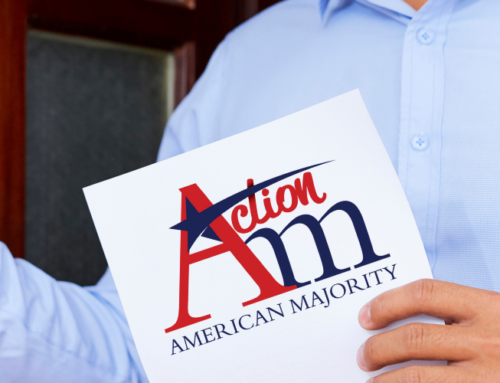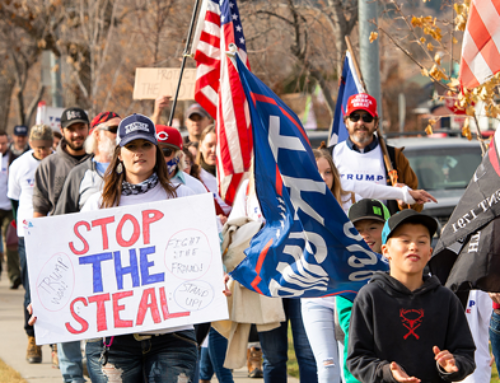By Andrew Looker, Jr.
Economic inequality has been propped up as a major issue before the upcoming 2020 election. Vermont’s Democratic Socialist Senator, Bernie Sanders, whose socialist message has resonated with young voters, says “The issue of wealth and income inequality is the great moral issue of our time, it is the great economic issue of our time, and it is the great political issue of our time.” How exactly do leftists like Senator Sanders propose to reduce the gap between the rich and the poor? By demanding “that the wealthy and large corporations pay their fair share in taxes.” However, the obsession with the “wealth gap” is completely misguided.
There will always be a level of income and wealth inequality. Some people have not yet started to climb the ladder of success, some are somewhere in the middle, while others are already on the top rung. This will always be the case, regardless of the claims from people such as Senator Sanders. Different people have differing levels of skill and economic drive. In the words of Patrick J. Buchanan, people are “born unequal in ambition, ability, talent, energy, personality, and drive, [thus] free markets must inevitably produce an inequality of results.” In the words of a conservative slogan, “You can’t eliminate income inequality until you eliminate effort inequality.”
A common assertion by people on the political Left surrounding the issue of economic inequality is that the rich do not pay their fair share of taxes. However, the data on taxation paints a different picture. According to 2011 data, the top 10% of income earners constitutes those making at least $150,000 a year. Additionally, the top 5% consists of those making at least $190,000 a year and the top 1% constitutes those making at least $500,000 a year. However, the top 10% pays 73% of all federal income taxes, despite earning only 42% of the nation’s income. Additionally, the top 1% pays 37% of the country’s federal income taxes, despite earning only 17% of the nation’s income. Furthermore, the bottom 47% of income earners pay little to no federal income taxes, proving the income tax system actually favors lower income individuals.
Additional data from a 2014 Tax Foundation study further prove this point. The median income in the United States was $38,000. Additionally, the top 10% consisted of those earning at least $133,000 annually, while the top 1% were those that made at least $465,000 a year. The top 50% of income earners pay an overwhelming 97.25% of federal income taxes, while the bottom 50% pay a mere 2.75% of the nation’s income taxes. Additionally, the top 10% pay 71% of all federal income taxes, despite representing only 47% of the nation’s income. Furthermore, the top 1% pays 39% of U.S. federal income taxes, despite earning only 21% of the nation’s income. Finally, the top 0.1% of income earners pay 20% of all income taxes, even though they hold only 10% of the nation’s income.
Leftists often claim that income inequality has led to the rich paying less and less of their fair share of taxes as time has progressed. However, a historical analysis reveals that the top 1% only paid 19% of taxes in 1980, while the top 1% accounted for 39% of revenue in 2015. The bottom 90% accounted for 52% of revenue in 1980, but paid only 29.4% of taxes in 2015. People on the Left also claim that free market principles and economic inequality lead to a smaller and weaker middle class. However, the upper middle class contained only 12.9% of the nation’s population in 1979, while it constituted 29.4% in 2014. The Left proclaims that economic inequality leads to an increase in poverty. In reality, the global extreme poverty rate was 94% in 1820, 34.8% in 1990, and only 9.6% in 2015. The percentage of the global population living on less than $1.90 a day (inflation-adjusted) declined from 44.3% in 1983 to less than 10% in 2015.
Proponents of increasing taxes to reduce economic inequality often point out that top marginal income tax rates exceeded 90% in the 1950s. The actual rate was 91% in 1950 and 1951, as well as every year between 1954 and 1959. This rate climbed slightly higher to 92% in 1952 and 1953. However, a study conducted by Thomas Pinketty, Emmanuel Saez, and Gabriel Zucman and published by the Tax Foundation provides additional context for these tax rates. In the 1950s, the top 1% paid an effective tax rate of 42%. This rate included all taxes on the local, state, and federal level, and of all varieties, whether they be income, payroll, corporate, excise, property, or estate taxes. The effective income tax rate for the top 1% during this same period was a mere 16.9%. The Tax Foundation lists three main explanations for this large discrepancy. First, the 91% bracket only applied to households with incomes exceeding $200,000, or approximately $2,000,000 in today’s dollars. A Wall Street Journal analysis found that less than 10,000 households fell into this bracket, which was only a small fraction of all households belonging in the top 1%. Second, this marginal tax rate was applicable only to money exceeding $200,000 so that individuals in this tax bracket were not subject to a 91% tax rate on their entire incomes. Third, there is a strong possibility that the astronomical 91% tax rate led to much higher rates of tax avoidance in conjunction with lower reported incomes. The Tax Foundation references that many studies confirm the existence of this phenomenon. As a result of this behavior, the government does not gain much additional revenue from such a high tax rate.
Economic inequality is not the great moral, political, and economic issue of this generation. Such inequality is the natural result of differences in abilities and ambitions. Additionally, the rich pay a disproportionate amount of income taxes and they did not pay a significantly higher percentage of their income in the past. Furthermore, poverty has dramatically fallen, while a large portion of the middle class has joined the ranks of the upper class. The misguided obsession with economic inequality and the implied need for substantial increases in taxes threatens to obliterate the system of wealth creation that has lifted countless people out of poverty and that has ushered in unparalleled economic progress. Therefore, such aims must be wholeheartedly rejected by all freedom-loving people everywhere.





